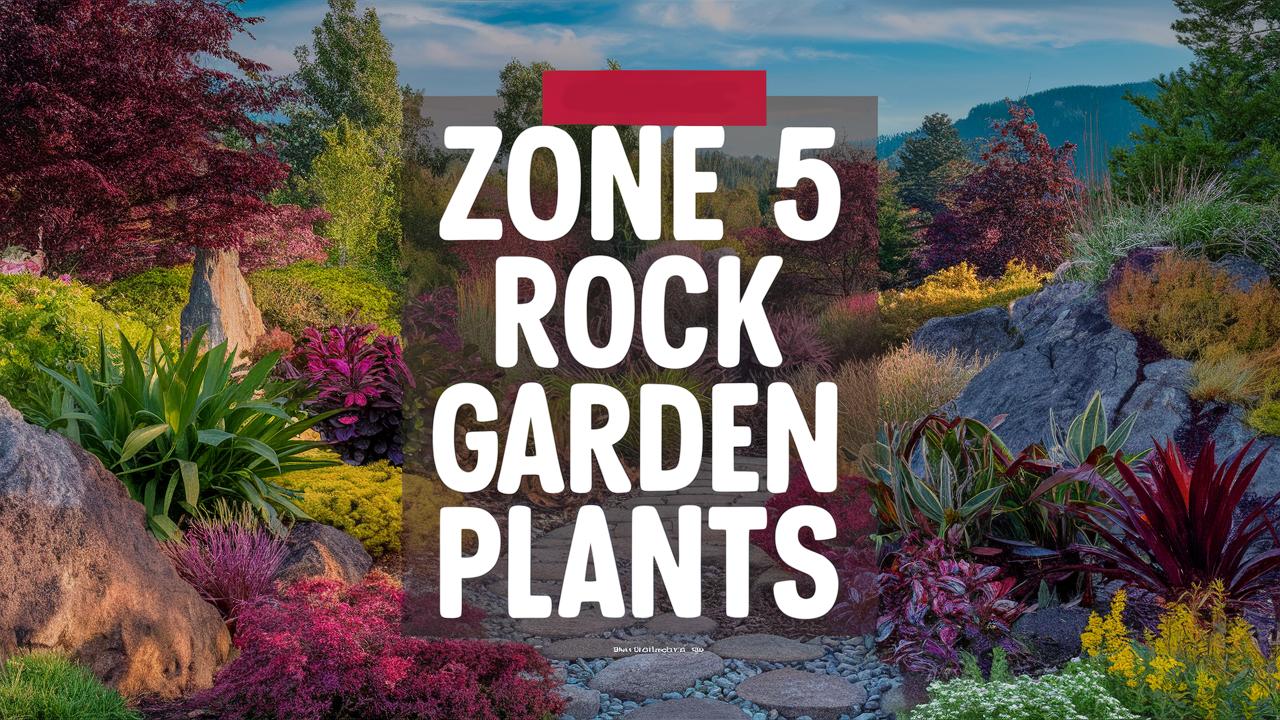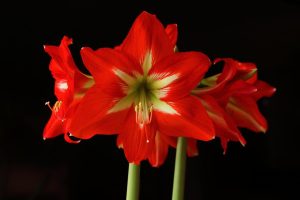n this in-depth exploration, we’ll explore an array of rock garden plants that flourish in Zone 5, celebrating their beauty, benefits, and specific care requirements.
Rock Cress (Arabis spp.)
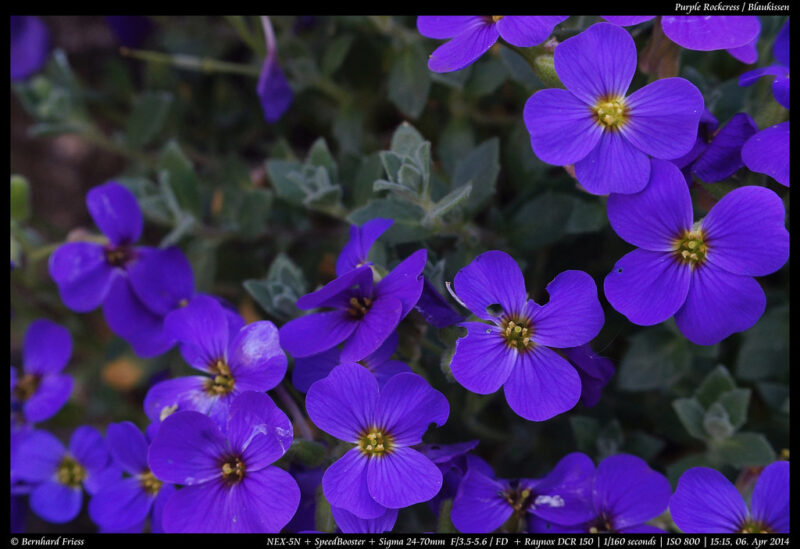
Rock cress, with its charming clusters of small flowers, brings a splash of color to rocky spaces and crevices. This perennial plant is known for its hardy nature, thriving in well-drained soil and full sun. The flowers, typically blooming in shades of white, pink, or purple, offer a delightful contrast to the foliage. Rock cress is particularly appealing because it forms dense mats that help suppress weeds.
In terms of care, rock cress is relatively low-maintenance. It prefers dry to medium moisture and can tolerate drought once established. Ideal for sunny rock gardens, it pairs beautifully with stones and boulders, creating a natural look. Additionally, its ability to spread means it can cover large areas efficiently, making it a fantastic choice for filling in barren spots.
Candytuft (Iberis sempervirens)
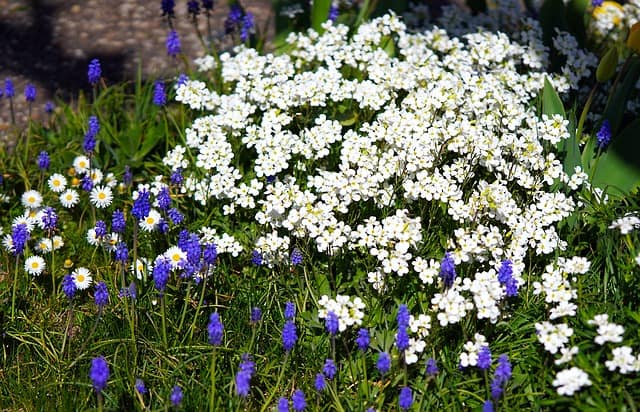
Candytuft is another stunning option for Zone 5 rock gardens, heralded for its fragrant white flowers that bloom prolifically in spring. As a semi-evergreen perennial, it provides year-round interest, especially when its evergreen leaves contrast with winter snows. Candytuft thrives in sunny environments and well-drained soils, making it well-suited for rocky landscapes.
This adaptable plant also has a remarkable capacity to tolerate poor soils, flourishing with minimal care. However, it’s important to avoid overwatering, as excess moisture can lead to root rot. Pruning spent blooms after flowering encourages a tidy appearance and may promote additional blooms. Its compact growth habit makes candytuft an ideal choice for borders or as a filler between larger stones.
Sedum (Creeping Varieties)

Sedum, or stonecrop, encompasses an impressive variety of species, with creeping varieties such as Sedum spurium and Sedum album being particularly suitable for rock gardens. These plants are notorious for their fleshy leaves and vibrant blooms, typically appearing in summer. Sedum thrives in well-drained, sandy soils and is highly drought-resistant, making it a perfect choice for Zone 5’s fluctuating climate.
Creeping sedums form a lush carpet of foliage, ideal for suppressing weeds and stabilizing soil around rocks or slopes. They are also incredibly versatile, pairing beautifully with other plants like succulents and ornamental grasses. A quick note on care: while they are low-maintenance, providing some air circulation and spacing between plants promotes healthy growth and minimizes disease risks.
Thrift (Armeria maritima)

Thrift, or sea pink, is a delightful addition to any rock garden, celebrated for its round, tufted habit and charming umbel-shaped flower heads. Typically found in coastal or rocky environments, thrift thrives in Zone 5, offering a striking visual appeal when planted en masse.
This perennial prefers well-drained soil and full to partial sun, making it a fantastic option for rocky outcrops or sloping areas. The flowers bloom in late spring to early summer, creating a vibrant display that attracts pollinators like bees and butterflies. For best results, it’s essential to deadhead spent blooms to encourage a longer flowering season. Thrift’s ability to tolerate drought once established makes it a robust choice for low-water landscapes.
Alyssum (Alyssum spp.)
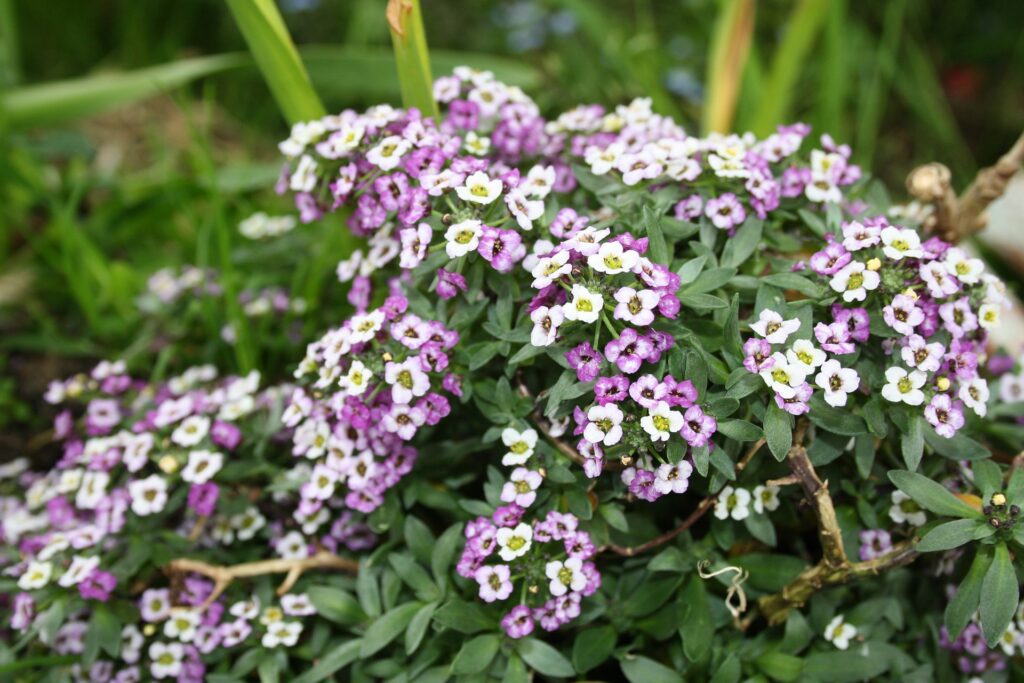
Sweet alyssum is a charming addition to any rock garden, known for its delicate clusters of tiny flowers that emit a sweet fragrance—a magnet for beneficial insects. These compact annuals or perennials thrive in well-drained soils and perform best in full sun, making them ideal for incorporating between rocks.
This adaptable plant can tolerate a range of conditions, including drought, once established. Regular deadheading will keep the flowers coming throughout the season, enhancing the visual appeal of your garden. Additionally, alyssum is excellent for softening the hard edges of rocks and boulders, creating a more cohesive look. Consider using alyssum as ground cover or in borders to enhance the texture of your rock garden.
Snow in Summer (Cerastium tomentosum)
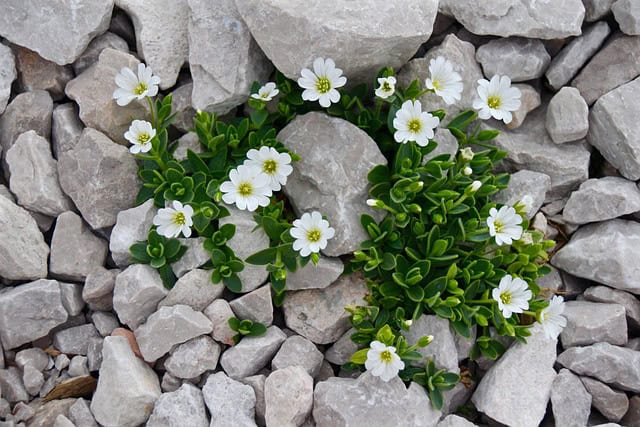
As its name suggests, snow in summer is a captivating plant that brings a blanket of white flowers to rock gardens in Zone 5. This perennial forms a dense mat of silvery-green leaves, topped with delicate white blooms in late spring. Originating from rocky terrains, it thrives in well-drained soils and full sunlight.
Snow in summer is a vigorous grower, effectively covering ground quickly and suppressing weeds. Its low, sprawling habit makes it a superb option for hanging over the edges of raised rock beds or for use in crevices. Because this plant adapts well to various soil types, it’s an excellent choice to fill challenging spots in your landscape. Just be mindful to trim back the foliage after blooming to maintain a tidy appearance.
Mountain Aven (Geum rivale)
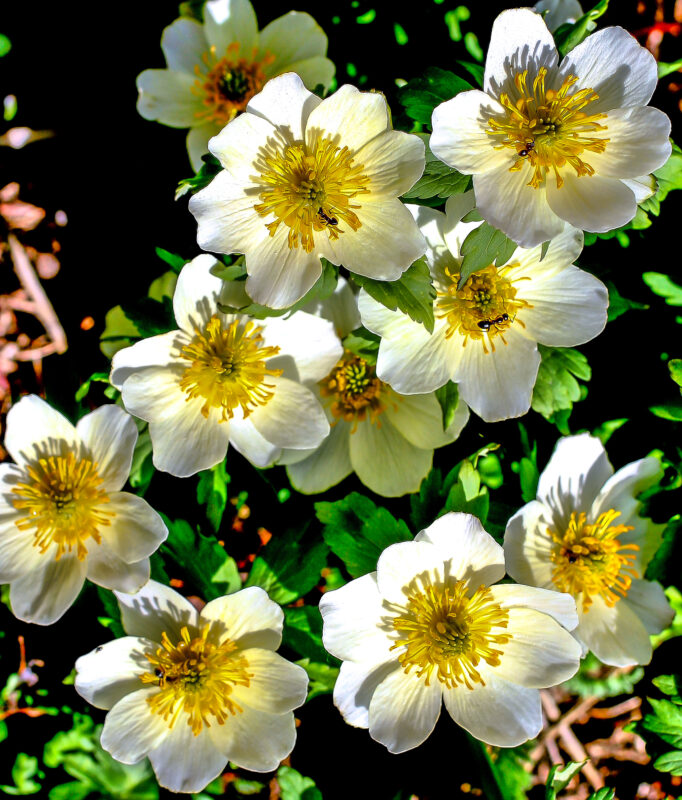
Mountain aven, a lesser-known gem in rock gardens, showcases lovely, cup-shaped flowers in shades of yellow and orange. This perennial flourishes in moist, well-drained soils and bright light conditions. Its ability to thrive in rocky environments adds an extra layer of durability to your garden.
Ideal for creating naturalistic settings, mountain aven pairs wonderfully with stones and other rugged plants. It also attracts various pollinators, making it a beneficial addition to your garden ecosystem. To maintain its vigor, occasional division every few years enhances plant health and encourages a robust growth habit.
Ice Plant (Delosperma spp.)

Ice plant is celebrated for its stunning, daisy-like flowers that bloom from late spring through early fall, creating a vibrant display of colors ranging from yellow to pink to purple. These succulent perennials are drought-tolerant and thrive in sandy, well-drained soils, making them perfect for a Zone 5 rock garden.
The fleshy leaves of ice plant are not only attractive but also help the plant retain moisture, allowing it to survive in less-than-ideal conditions. Ice plants spread quickly, making them great for filling in gaps among rocks or serving as ground cover. Deadheading remains essential to extending the bloom time and maintaining a polished appearance.
Creeping Thyme (Thymus serpyllum)
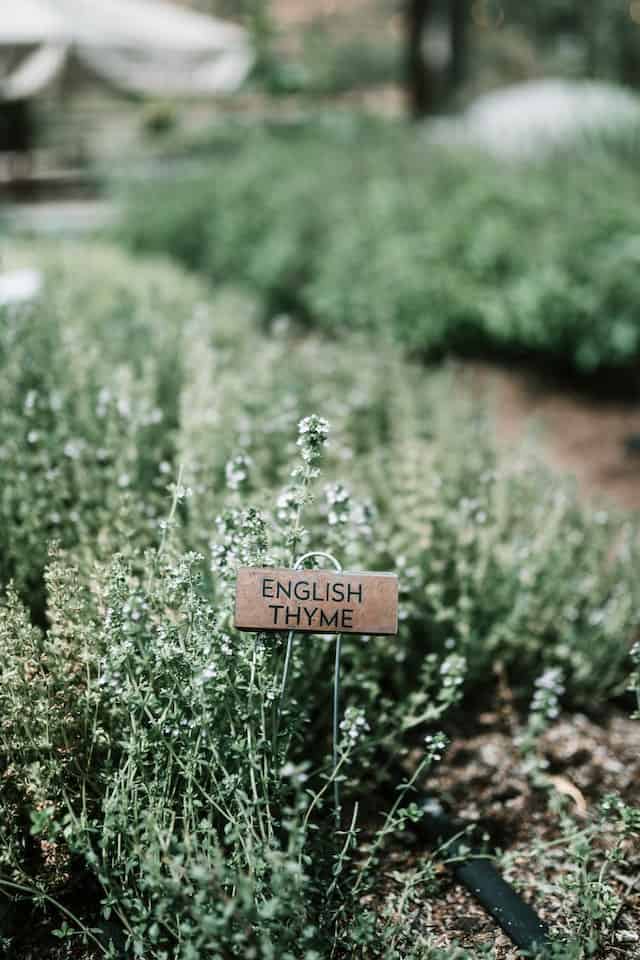
Creeping thyme is a versatile ground cover known for its aromatic foliage and beautiful purple flowers that bloom in summer. This hardy perennial thrives in well-drained soils and full sun, making it an excellent choice for a Zone 5 rock garden.
Creeping thyme not only attracts pollinators but also offers a delightful fragrance when walked upon. Its low, dense growth habit is perfect for edging pathways or filling in spaces between stones, eliminating weeds while enhancing the visual interest of the landscape. Minimal care is required, just occasional trimming to encourage new growth and maintain its shape.
Creeping Phlox (Phlox subulata)

Creeping phlox, or moss phlox, is a classic choice for rock gardens, admired for its vibrant spring blooms and evergreen foliage. The plant produces a dazzling carpet of flowers in shades of pink, purple, or white, often blooming before other plants wake from winter.
Creeping phlox prefers well-drained soil and full sun to thrive, making it an ideal candidate for rocky outcrops or slopes. Its sprawling growth habit can help soften the edges of stone paths or walls. To keep this plant healthy and flowering beautifully, practice regular deadheading, and consider dividing it every three to four years to encourage vigorous growth.
Blue Star Creeper (Isotoma fluviatilis)

Blue star creeper is a charming ground cover that forms a lush green mat dotted with small star-like blue flowers. This perennial thrives in a variety of soil types and performs well in both sunny and partially shaded locations, providing versatility in the rock garden.
Ideal for filling in between stones or on slopes, blue star creeper serves as an excellent weed suppressant while adding a soft touch to the landscape. Regular watering promotes vigorous growth, particularly during the establishment phase. As a low-maintenance option, it requires little more than occasional pruning to keep it looking its best throughout the growing season.
Woolly Thyme (Thymus pseudolanuginosus)

Woolly thyme is a delightful low-growing perennial recognized for its soft, fuzzy leaves and highly fragrant nature. This drought-tolerant option thrives in full sun and well-drained soils, making it perfect for rock gardens in Zone 5.
Not only does woolly thyme attract pollinators, but it also creates a beautiful visual contrast with its silvery-green foliage. Its compact growth pattern allows it to spill over the edges of rocks elegantly, while its aromatic leaves bring an enchanting scent to your gardening space. Regular trimming will help maintain its shape and encourage healthy growth.
Dwarf Yarrow (Achillea millefolium ‘Nana’)

Dwarf yarrow is a compact perennial that brings texture and color to rock gardens with its feathery foliage and clusters of vivid flowers in shades of yellow, pink, or white. This durable plant thrives in well-drained soils and full sun, establishing itself as a hardy addition to Zone 5 gardens.
Dwarf yarrow is also celebrated for its versatility, often used in borders or as a filler among rocks. It requires minimal care, but occasional deadheading ensures extended blooming. Furthermore, yarrow possesses medicinal properties, making it not only an attractive garden plant but a valuable addition to any herbal remedy collection.
Ajuga (Ajuga reptans)
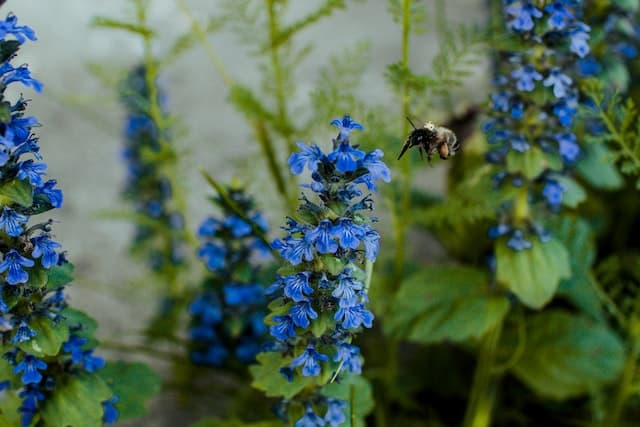
Ajuga, also known as bugleweed, is a vigorous ground cover characterized by its vibrant foliage and striking flower spikes. This perennial thrives in a variety of environments, from sunny to shaded areas, making it an adaptable choice for different rock garden conditions.
The interesting feature of ajuga is its ability to form dense mats that effectively suppress weed growth while providing an attractive ground cover. Its flowers bloom in spring and attract a range of pollinators. While hard to kill, ajuga thrives best with moderate moisture, and regular trimming helps maintain its health and aesthetics.
Soapwort (Saponaria officinalis)
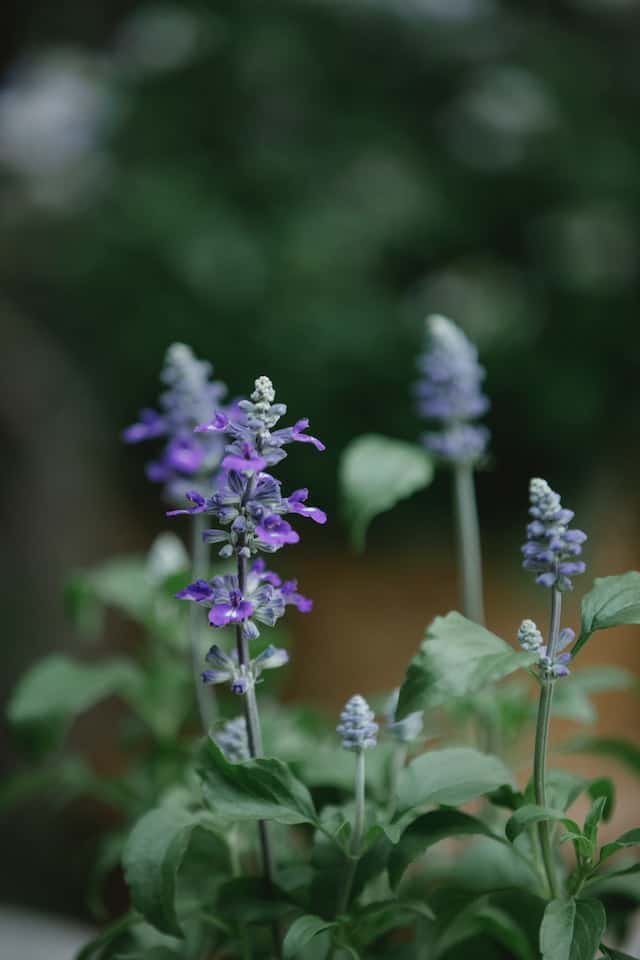
Soapwort is an enchanting perennial known for its charming clusters of pink flowers that bloom in late spring into summer. This resilient plant thrives in well-drained, rocky soils and is tolerant of drought, making it well-suited for a Zone 5 rock garden.
The foliage of soapwort can also withstand foot traffic, making it an excellent candidate for garden paths or borders. It’s worth noting that soapwort can spread aggressively, so maintaining containment through regular division and careful planting is essential to keep it in check without sacrificing the beauty it adds to the landscape.
Wood Anemone (Anemone nemorosa)

Wood anemone is a delicate, shade-loving perennial that brings a touch of elegance to rock gardens. With its charming white flowers soaring above the foliage in spring, this plant is ideal for creating tranquil woodland-inspired spaces.
Thriving in moist, well-drained soils, wood anemone performs well in partially shaded areas, especially under trees or shrubs. Its clumping growth habit makes it an excellent candidate for borders along pathways or as an underlayer for taller plants. Regular maintenance includes ensuring the soil remains consistently moist and removing faded blooms to encourage a longer flowering period.
Sea Holly (Eryngium spp.)
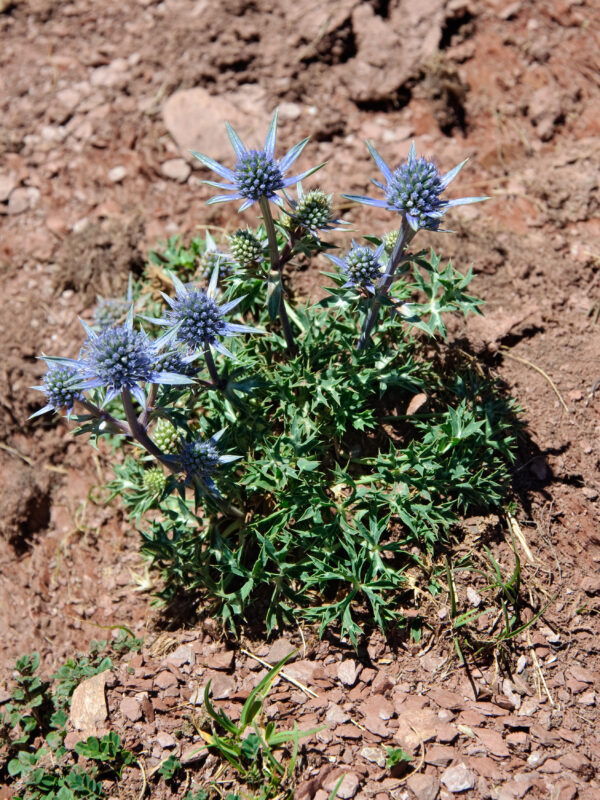
Sea holly is a striking spiky perennial adorned with unique, thistle-like flowers. This plant prefers well-drained soil and sunny locations, thriving in Zone 5 rock gardens while lending an exotic flair to the landscape.
Sea holly not only brings architectural interest but also attracts pollinators, serving as an excellent addition to any wildlife-friendly garden. They are relatively low-maintenance but benefit from a good soaking if rainfall is scarce. The deep-rooted nature of sea holly lends it drought resistance, making it a low-water option in your rock garden design.
Tickseed (Coreopsis spp.)
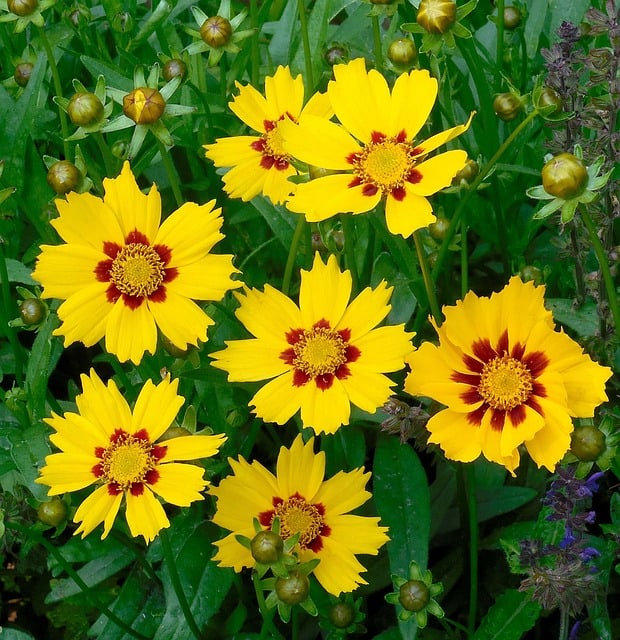
Tickseed bursts with joy in the summer months, thanks to its bright yellow flowers that seem to dance in the breeze. These hardy perennials thrive in well-draining soils and full sun, bringing warmth and a cheerful demeanor to rock gardens in Zone 5.
Tickseed is also known for its ability to attract pollinators while flourishing with little effort required. Once established, this plant is relatively self-sufficient and can tolerate brief periods of drought. Regular deadheading promotes a longer bloom time, ensuring a vibrant display from early summer until fall, enhancing the garden’s visual interest.
Pasque Flower (Anemone patens)
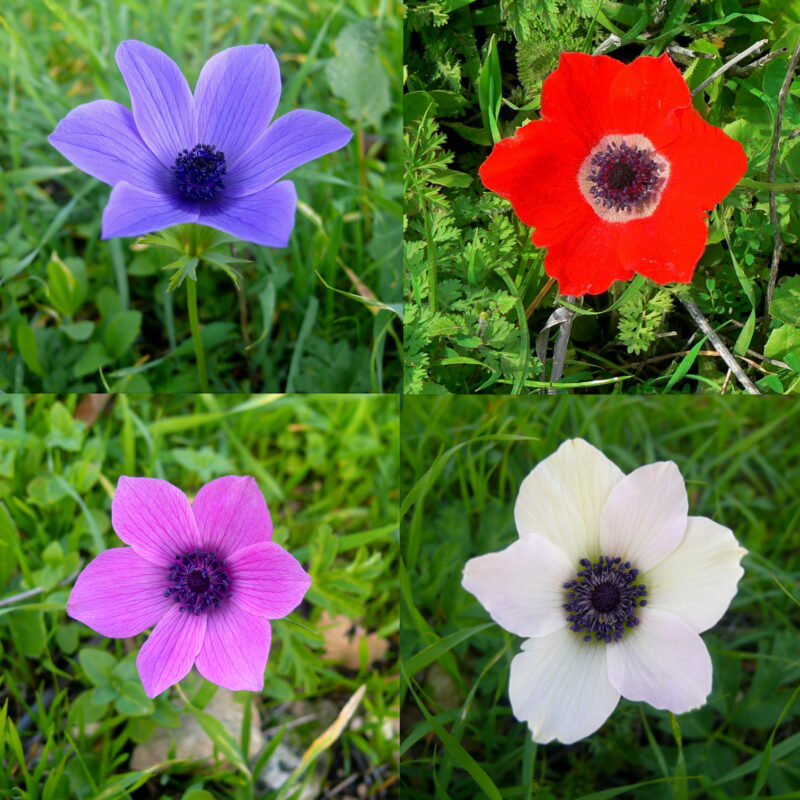
Pasque flower is one of the earliest bloomers in rock gardens, captivating gardeners with its delicate, bell-shaped purple flowers. Thriving in sunny and well-drained conditions, this perennial is perfect for poor soils, making it an ideal choice for rocky landscapes in Zone 5.
The foliage emerges as vibrant green before blooming, providing visual interest even when the flowers are not present. Pasque flower prefers dry soils and is drought-tolerant once established. Protecting it from excessive moisture will ensure the best growth. Most notably, pasque flower has symbolic significance and is often associated with spring’s arrival, making it a joyful addition to any garden.
Jacob’s Ladder (Polemonium caeruleum)
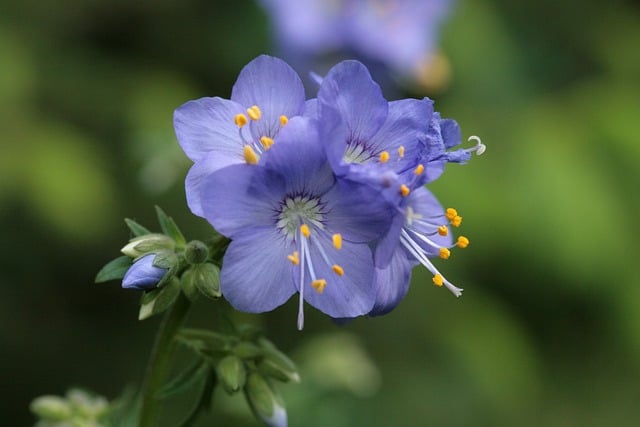
Jacob’s ladder is an ornamental perennial that delights with its fragrant, bell-shaped blue flowers, blooming in spring and early summer. This hardy plant thrives in well-drained soils and partial shade, making it a lovely addition to a rock garden with dappled sunlight.
This plant pulls double duty by adding both beauty and texture to your garden with its feathery foliage. Its ability to attract pollinators enhances the ecological health of your landscape, encouraging a diverse garden ecosystem. Like many perennials, Jacob’s ladder benefits from deadheading to prolong flowering, while also needing adequate moisture; consistent watering will reward you with vibrant blooms.
Heuchera (Heuchera spp.)
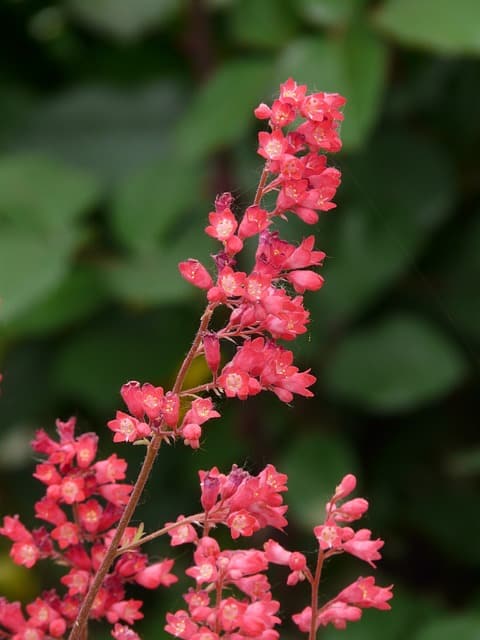
Coral bells (Heuchera) are renowned for their stunning foliage, available in a range of colors from deep plum to bright lime. While not flowering as prominently as some of its counterparts, heuchera’s evergreen nature and colorful leaves bring year-round interest to rock gardens.
Although it prefers partial shade, heuchera performs well in various lighting conditions, making it adaptable for different areas in your garden. Regular watering, particularly during dry spells, keeps this plant vibrant. As a low-maintenance option, occasional division aids in rejuvenating growth and ensures your rock garden remains lush.
Heather/Heather (Erica spp. & Calluna spp.)
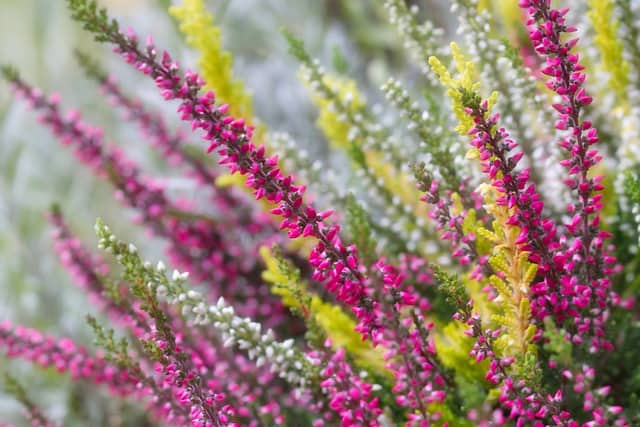
Heather is a staple of rock gardens, known for its beautiful blooms and evergreen foliage. It thrives in acidic well-drained soils and prefers full sun, making it a resilient and colorful option for Zone 5 gardens.
The diverse nature of heathers means you can enjoy a range of bloom colors, from violet to pink to white, providing a stunning palette for your landscape. Maintenance is minimal, although regular pruning helps maintain the shape and health of the plants. Heather’s low height allows it to make a splendid ground cover or border, enhancing the visual appeal of rocky landscapes.
Rhododendrons and Azaleas (Dwarf Varieties)
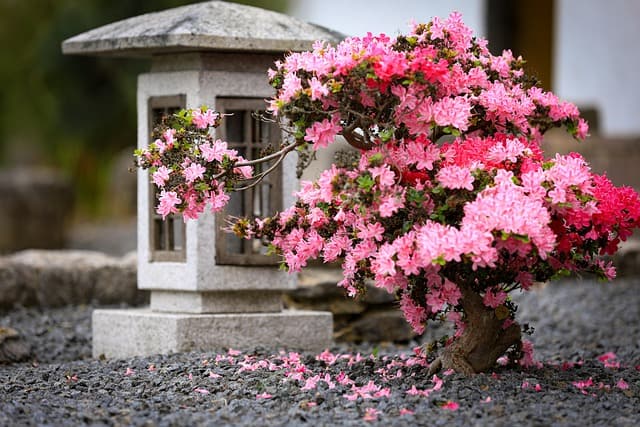
Dwarf rhododendrons and azaleas add a touch of elegance to rock gardens with their eye-catching blossoms and lush foliage. These shrubs thrive in acidic, well-drained soils and partial shade or filtered sunlight.
Dwarf evergreen varieties like Rhododendron ‘PJM’ and low-growing azaleas can be particularly beneficial to your rock landscape, providing year-round interest. While relatively low-maintenance, ensuring they retain consistent moisture will help bolster growth and bloom production. Their dense foliage makes them excellent companions for stone features or pathways, creating an inviting and serene garden atmosphere.
Dwarf Conifers
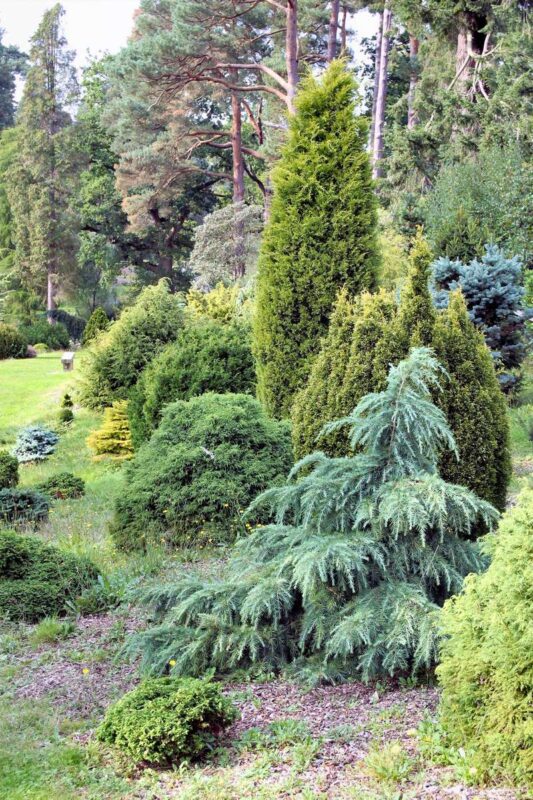
Dwarf conifers are invaluable in rock gardens, providing a unique textural contrast with their varied shades of green and blue. Their compact growth habit allows them to fit into tight spaces and adapt superbly to rocky terrains.
Dwarf varieties of cedar, spruce, and pine can add structure and year-round interest to your landscape. Planting conifers among boulders or alongside flowering plants will create a visually appealing contrast. Although these plants require minimal care, watering during drought periods ensures their success in your garden.


